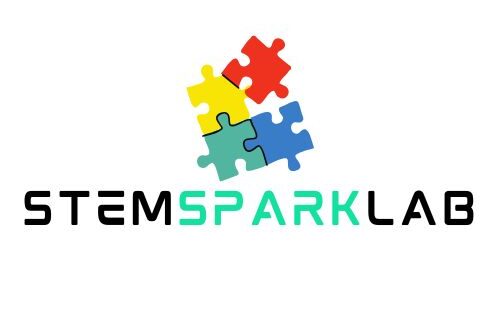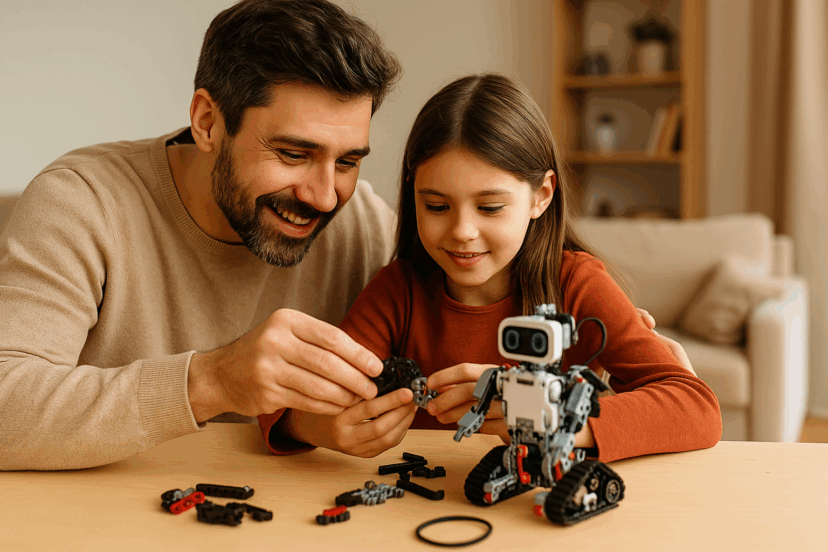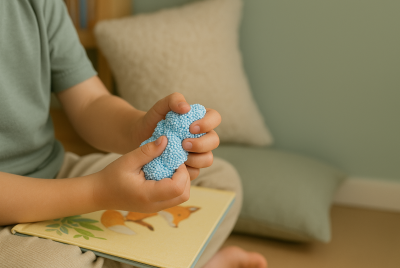Robots for Kids: Fun Learning Tools That Spark Curiosity
We may earn a commission for purchases made using our links. Please see our disclosure to learn more.
Robots for kids are more than just toys—they’re tools that teach coding, spark creativity, and nurture real-world skills. Whether your child is a tech enthusiast or just getting curious about how things work, robots designed for young minds offer engaging ways to learn through play.
Let’s explore why they’re such powerful learning tools and discover the best options available in 2025.
Why Robots Are Great for Children’s Development
Kids today are growing up in a digital world. Instead of resisting tech, why not use it to your child’s advantage?
Educational robots introduce kids to foundational STEM (science, technology, engineering, and math) concepts in a hands-on, fun way. More than that, these smart toys build problem-solving, logical thinking, and persistence—skills that matter well beyond childhood.
And let’s not forget: learning through play makes it stick. When kids have fun, they’re more engaged and eager to explore.
What to Look for in a Kid-Friendly Robot
Not all robots are created equal. When picking a robot for your child, consider the following:
- Age Appropriateness – Always match the robot’s complexity with your child’s age.
- Coding Capabilities – Some offer drag-and-drop coding, while others dive into Python or JavaScript.
- Durability – Look for sturdy designs that can handle a few tumbles.
- Educational Value – Choose robots that teach skills like sequencing, problem-solving, or engineering.
- Expandability – Some robots grow with your child, offering challenges as they learn.
Now, let’s jump into the best robots for kids that tick all these boxes.
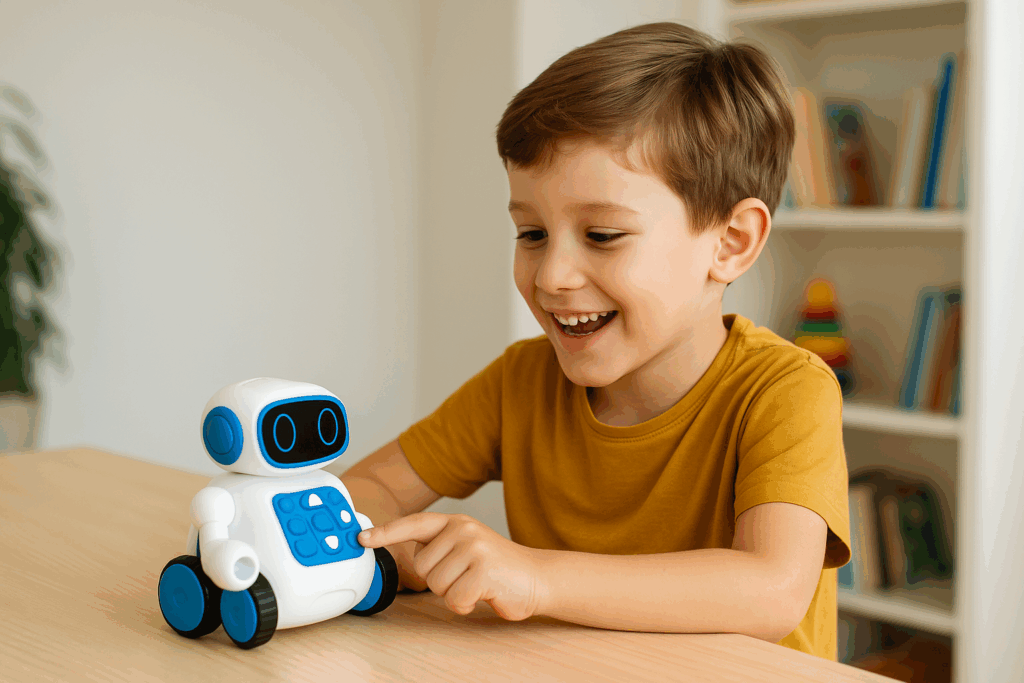
7 Best Robots for Kids in 2025
1. LEGO Boost Creative Toolbox
LEGO knows how to make learning feel like play. With Boost, kids build five different robots—each with unique functions—then code them using a kid-friendly app.
- Ideal for ages: 7–12
- Teaches: Coding, mechanics, engineering
- Why kids love it: They get to build and customize their own robots!
2. Botley 2.0 Coding Robot
No screens? No problem. Botley is a fantastic intro to coding without a tablet or smartphone. Kids program movements using simple directional buttons on a remote.
- Ideal for ages: 5–9
- Teaches: Logic, sequencing
- Bonus: Botley lights up in the dark and can detect objects!
➡️ View product
3. Wonder Workshop Dash Robot
Dash is like a curious puppy—but smarter. It reacts to voices, dances, and responds to commands via an intuitive app.
- Ideal for ages: 6+
- Teaches: Basic coding, voice commands
- Expandability: Compatible with LEGO and extra sensors
➡️ View product
4. Sphero Mini Robot Ball
Sphero Mini packs powerful tech into a tiny, colorful shell. It can roll, light up, and be programmed with block-based coding or JavaScript.
- Ideal for ages: 8+
- Teaches: Coding and physics
- Fun fact: It also doubles as a mini game controller!
➡️ View product
5. UBTECH Jimu Robot Builder Kit
This is perfect for kids ready to level up. Jimu kits let kids assemble and program real robots with moving limbs and sensors.
- Ideal for ages: 8–12
- Teaches: Engineering, robotics, coding
- Why it stands out: Kids build from scratch—no preset models required.
➡️ View product
6. Cozmo by Anki (Resurrected)
Cozmo’s return is exciting for fans. With a personality-packed AI and facial recognition, it feels like a real companion.
- Ideal for ages: 7+
- Teaches: Problem-solving, coding
- What makes it unique: Cozmo expresses emotion and evolves with use
7. Makeblock mBot Neo
A serious contender for future engineers. mBot Neo is a programmable robot that introduces AI concepts and real-world sensors.
- Ideal for ages: 10+
- Teaches: AI, coding, robotics
- Advanced features: Voice control, ultrasonic sensors, and expansion ports
➡️ View product
How Science Supports the Power of Robots in Learning
Beyond the fun and fascination, robots for kids are backed by solid research. Educational robotics is more than a trend—it’s a proven method to boost learning outcomes and cognitive development in children.
Educational Robotics Improves STEM Learning Outcomes
A multilevel meta-analysis published in the International Journal of STEM Education reviewed 21 different studies and found that integrating educational robots significantly improves both performance and attitude in STEM subjects. The study found:
- A strong positive impact on learning performance and motivation
- The most effective outcomes appeared in technology-based disciplines
- Project-based and game-based learning with robots offered the highest benefits
Explore the full meta-analysis on educational robotics in STEM education for a comprehensive look at these findings.
Cognitive Growth Through Robotics in Early Childhood
Another compelling study from Frontiers in Psychology looked at how robotics activities influence younger children. Using a combination of qualitative and quantitative methods, researchers discovered:
- Noticeable improvement in children’s logical thinking and information processing
- Better attention spans and organization in task-based activities
- Positive feedback from both children and their parents about the experience
Dive deeper into the study on robotics education and cognitive development in children to learn how robotics impacts the youngest learners.
These studies confirm what many parents and educators already observe—robots for kids aren’t just cool gadgets. They’re powerful tools that lay the foundation for future learning and problem-solving skills in a rapidly evolving world.
And if you’re looking to complement your child’s tech-based learning tools, check out this helpful resource on microscopes for kids and STEM learning for more screen-free, hands-on educational options.
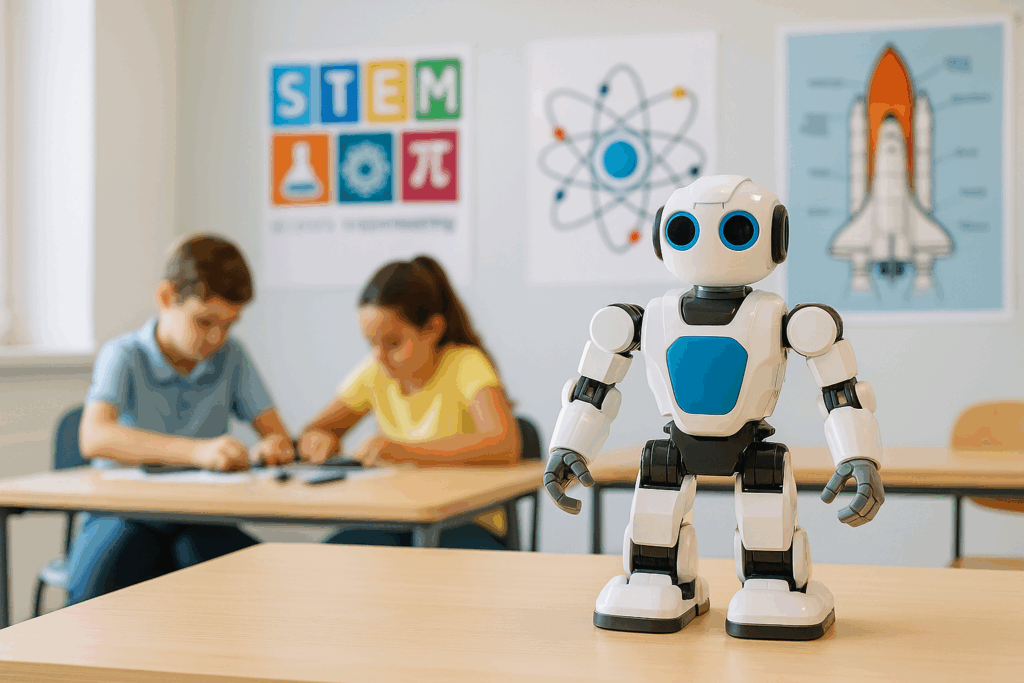
Tips for Introducing Robotics at Home
Getting started with robots at home doesn’t have to be complicated. Here are a few simple tips:
- Start with curiosity, not pressure. Let kids explore at their own pace.
- Make it a family project. Building together creates stronger bonds.
- Use challenges and games. Turn learning into missions or obstacle courses.
- Join online communities. Many robots have active parent-kid user groups.
Even just 15–20 minutes a day with their robot can make a big difference.
Final Thoughts: The Future Starts With Play
Robots for kids aren’t just about learning to code. They’re about inspiring the next generation of inventors, thinkers, and makers. By giving kids access to fun, hands-on tech, you’re opening the door to lifelong skills and confidence in a digital world.
So if you’re looking to blend playtime with purposeful learning, now’s a great time to start exploring the right robot for your child.
FAQs About Robots for Kids
Q1: What age is best to introduce kids to robots?
A: Many robots are designed for kids as young as 4 or 5, using simple, screen-free programming. More advanced robots work well for ages 8+.
Q2: Do kids need prior coding knowledge to use these robots?
A: Not at all. Most beginner robots use drag-and-drop coding or visual blocks that are intuitive, even for first-timers.
Q3: Are children safe to use robots?
A: Indeed. Child safety is a priority in the construction of reputable educational robots. Always supervise younger kids during initial use.
Q4: How long does it take for kids to learn coding with a robot?
A: Kids often pick up basics in a few sessions. Regular play helps reinforce concepts naturally over time.
Q5: Can these robots be used in schools too?
A: Absolutely. Many are classroom-ready and even align with STEM curriculums.
